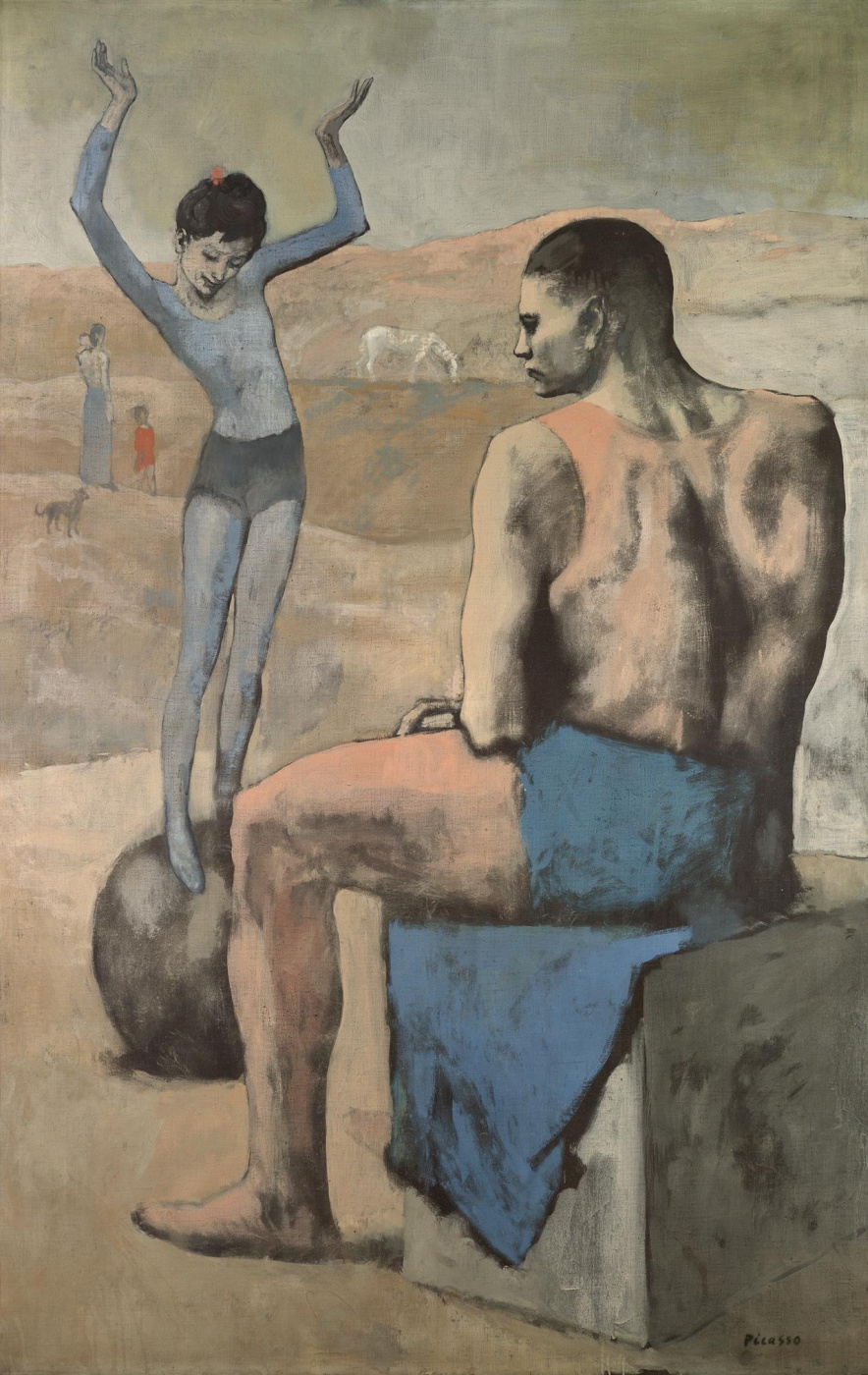Girl on the ball
Description of the artwork «Girl on the ball»
Since 1905, the mood of Picasso’s paintings has changed noticeably. The artist almost recovered from the suicide of his friend Casagemas, and brightness finally entered his life. Changes occurred gradually, and the more joyful moments Picasso experienced, the more life appeared in his works. First of all, this affected the color scheme of the paintings: warm, muted colors, red, pink, orange and brown replaced the cold shades of blue and grey. However, Picasso preferred pink, which gave the name to the new period in his work.
Picasso’s Girl On The Ball can be called a kind of synthesis of the blue and pink periods. In a surprising way, it combines the elusive anxiety of the first, and the easy serenity of the second. It is like a clash of the past and the future at one point, a visible transformation of Picasso’s creative methods and techniques. The contradiction is enhanced by using two different color palettes and opposing the main subjects of the picture.
The young gymnast girl wearing close bluish-grey tights, seems to be the continuation of the ball on which she balances, the curves of her body repeat its form. While the instability of her pose is more like a game, she seems to float in the air, barely touching the ball with her toes. In contrast, the athlete, pictured in the foreground, practically grows in the ground. The imposing cube on which he sits and the angular, powerful figure of the man literally turn him into the personification of stability. However, there is an invisible link between the characters of the canvas, despite all their dissimilarity, accentuated with the help of color. In the end, it becomes clear that they both constitute an ideal harmony of equilibrium, where one is impossible without the other.



